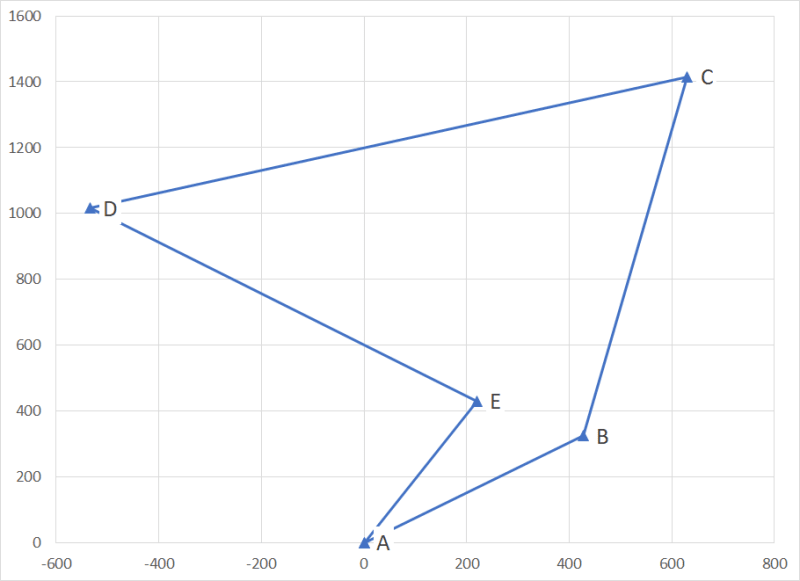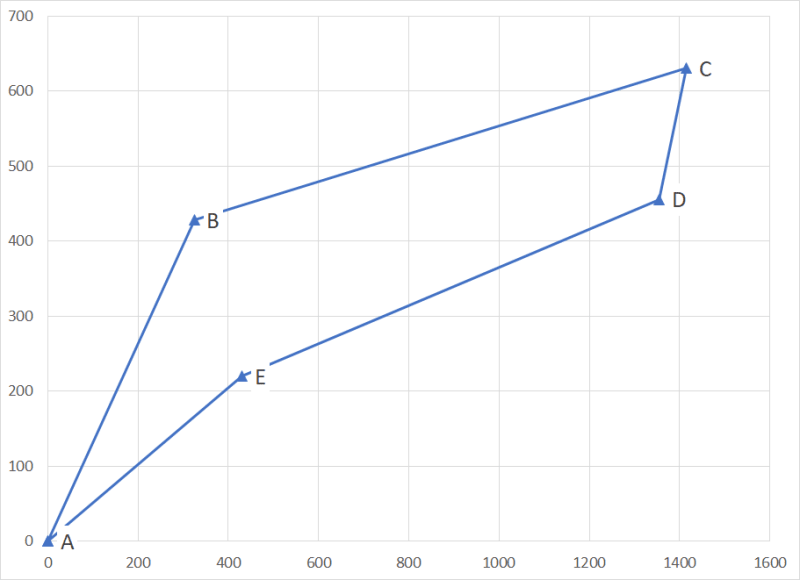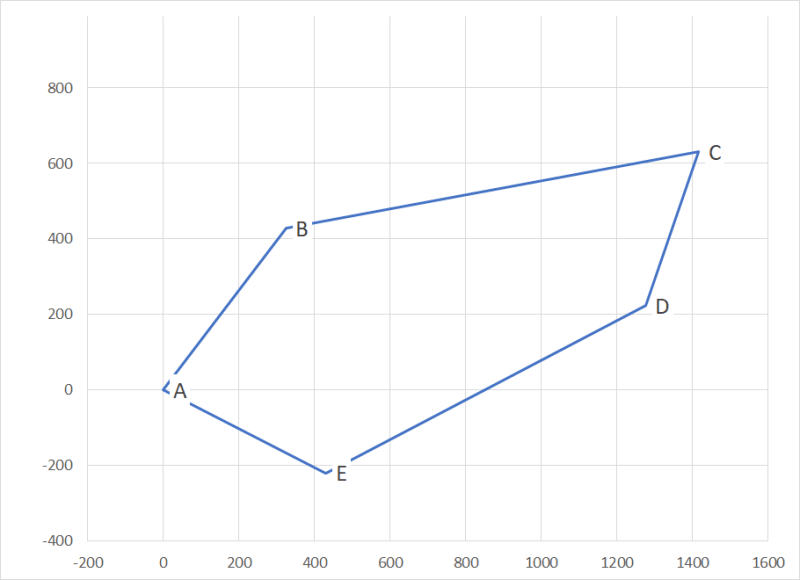Hello,
I'm studying for my Surveying exam. From Barry Kavanaugh's textbook I have the following problem. I tried to solve the bearing portion first based on the fact that a five-sided traverse has 540d interior angles. Then I found out that I have two unknown interior angles, not one. Of course I could turn all the bearings into latitudes and departures and then do something really really complicated in which I'm sure I would make a mistake somewhere along the line. But I'm wondering if there is an elegant solution in which the problem can be solved in minutes by hand. Thanks in advance!
Course AB Distance = 537.144 Bearing = N37d10m49sE
Course BC Distance = 1109.301 Bearing = N79d29m49sE
Course CD Distance = ? Bearing = S18d56m31sW
Course DE Distance = 953.829 Bearing = ?
Course EA Distance = 483.669 Bearing = N62d58m31sW
Solve for Distance of CD and Bearing of DE.
I'm studying for my Surveying exam. From Barry Kavanaugh's textbook I have the following problem. I tried to solve the bearing portion first based on the fact that a five-sided traverse has 540d interior angles. Then I found out that I have two unknown interior angles, not one. Of course I could turn all the bearings into latitudes and departures and then do something really really complicated in which I'm sure I would make a mistake somewhere along the line. But I'm wondering if there is an elegant solution in which the problem can be solved in minutes by hand. Thanks in advance!
Course AB Distance = 537.144 Bearing = N37d10m49sE
Course BC Distance = 1109.301 Bearing = N79d29m49sE
Course CD Distance = ? Bearing = S18d56m31sW
Course DE Distance = 953.829 Bearing = ?
Course EA Distance = 483.669 Bearing = N62d58m31sW
Solve for Distance of CD and Bearing of DE.



